In Barnegat Bay’s Sedge Islands, ospreys reign
the New Jersey Osprey Project, the Conserve Wildlife Foundation of New Jersey is undertaking "Project RedBand," a citizen-science based project on Barnegat Bay to engage local
-
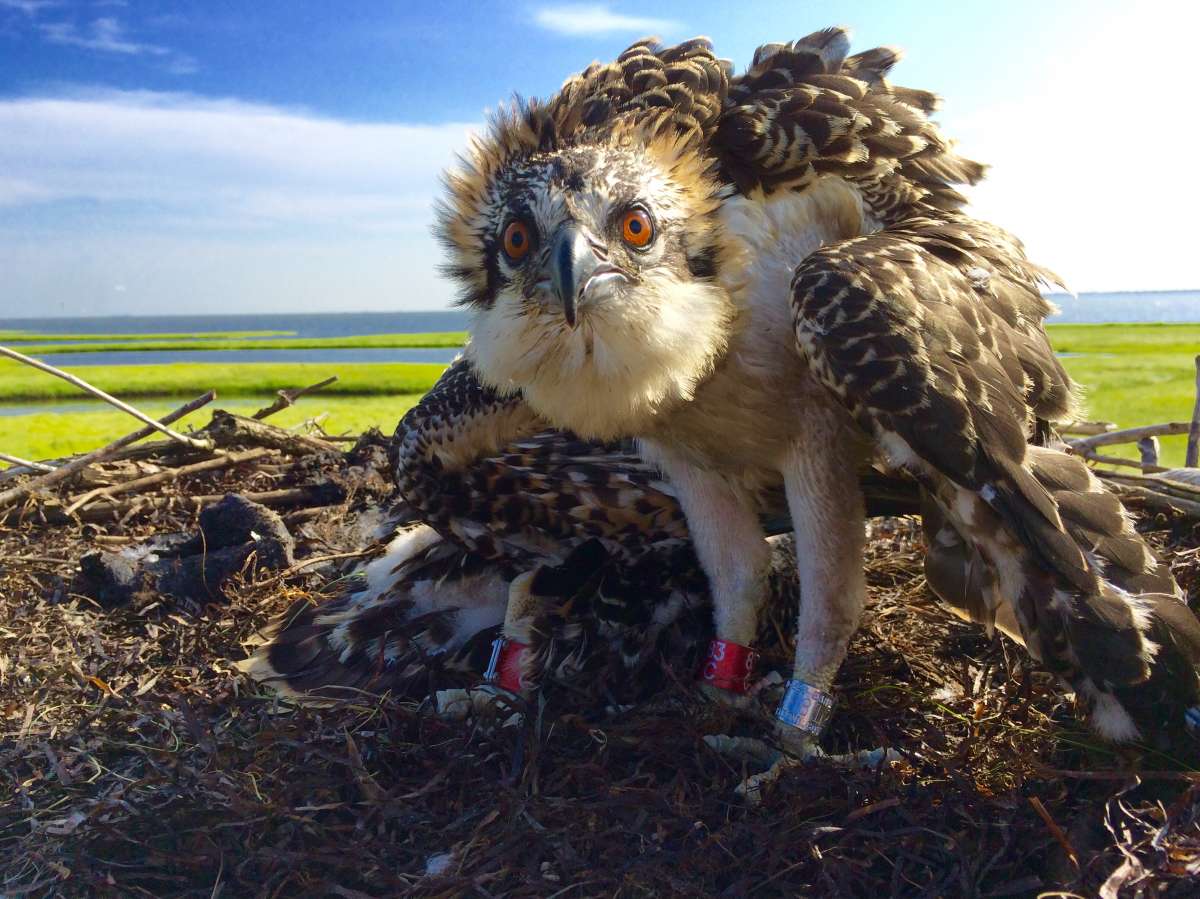
A little teaser of what's to come later in this gallery. This is a curious osprey nestling looking directly into the camera of CWF's Ben Wurst. (Justin Auciello for WHYY)
-
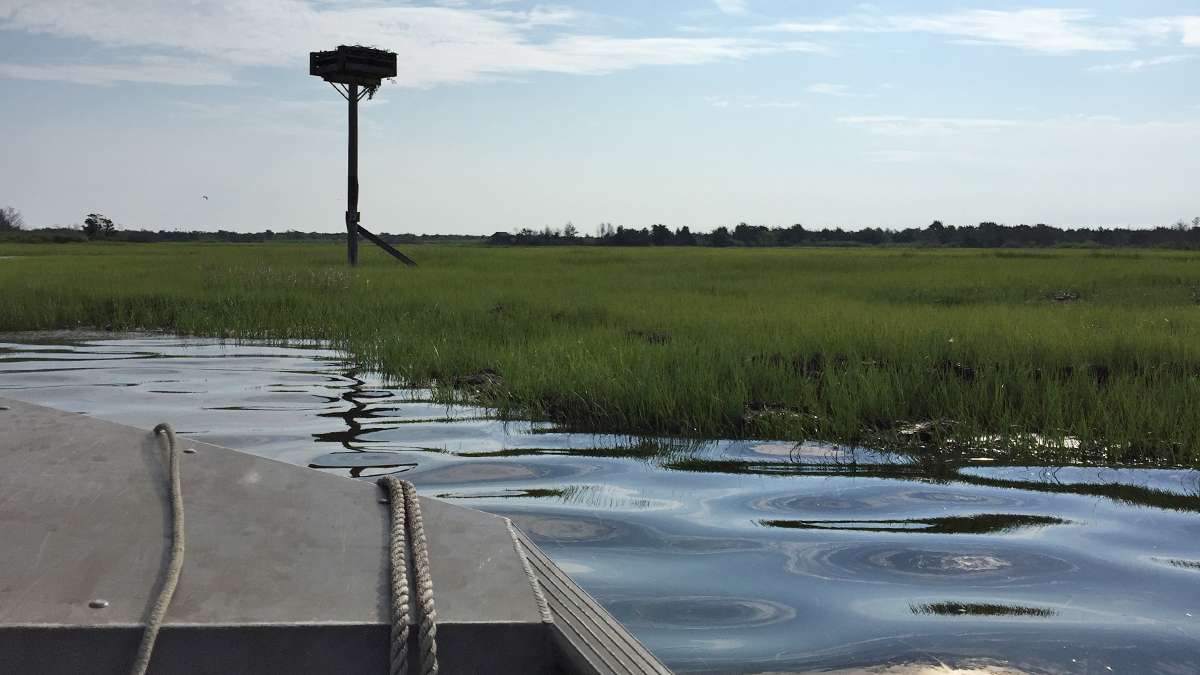
Approaching an osprey nest within Sedges Islands State Wildlife Management Area. (Justin Auciello for WHYY)
-
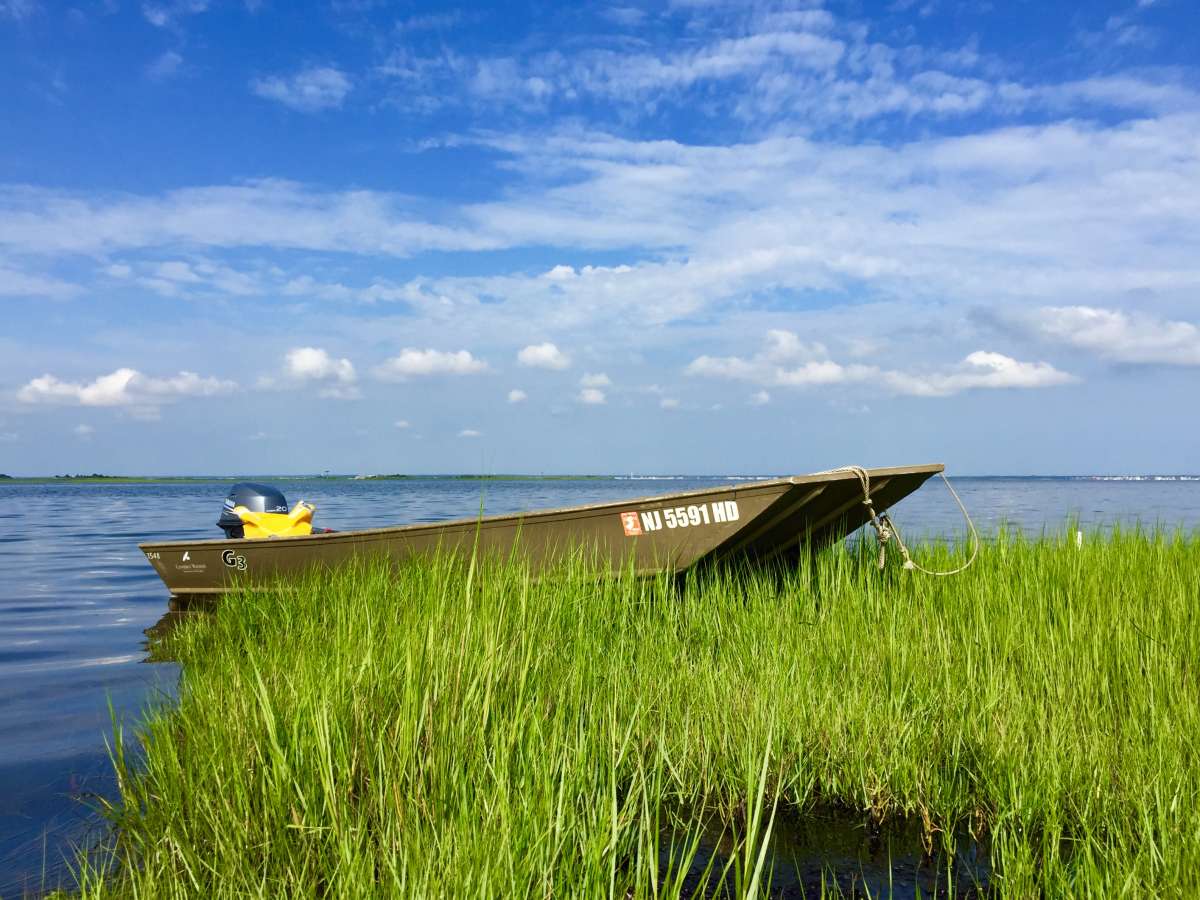
The small boat Ben Wurst uses on his osprey survey and banding missions. (Justin Auciello for WHYY)
-
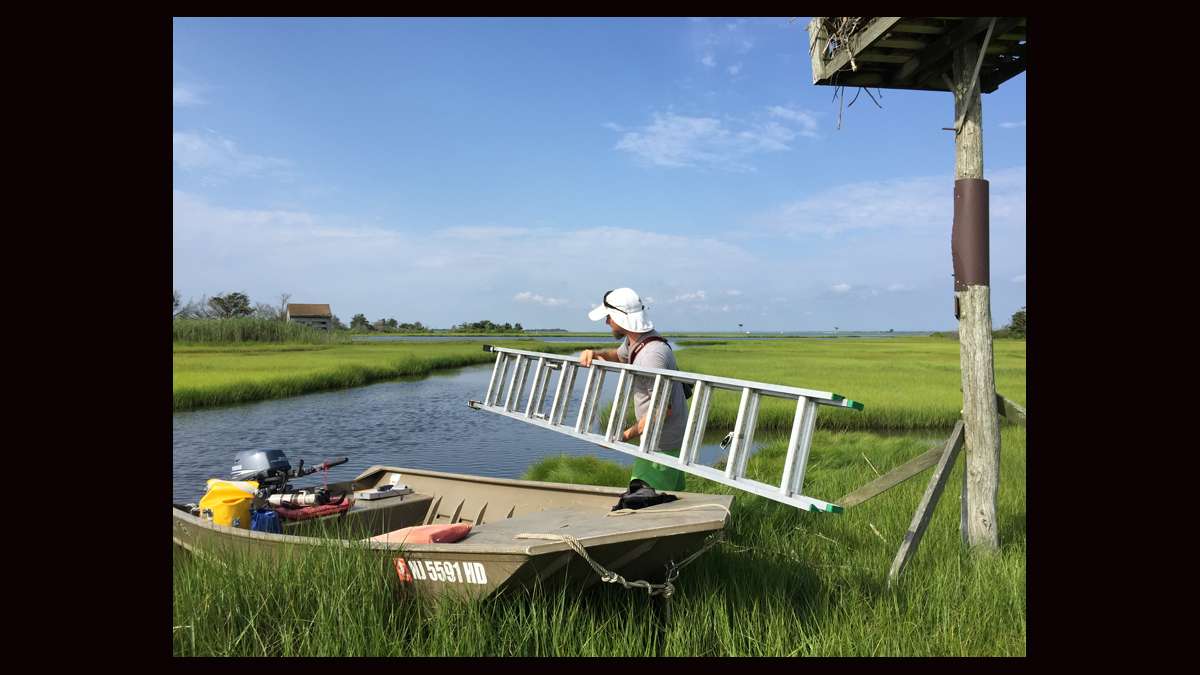
Ben Wurst unloading a ladder from the boat to access an osprey nest. (Justin Auciello for WHYY)
-
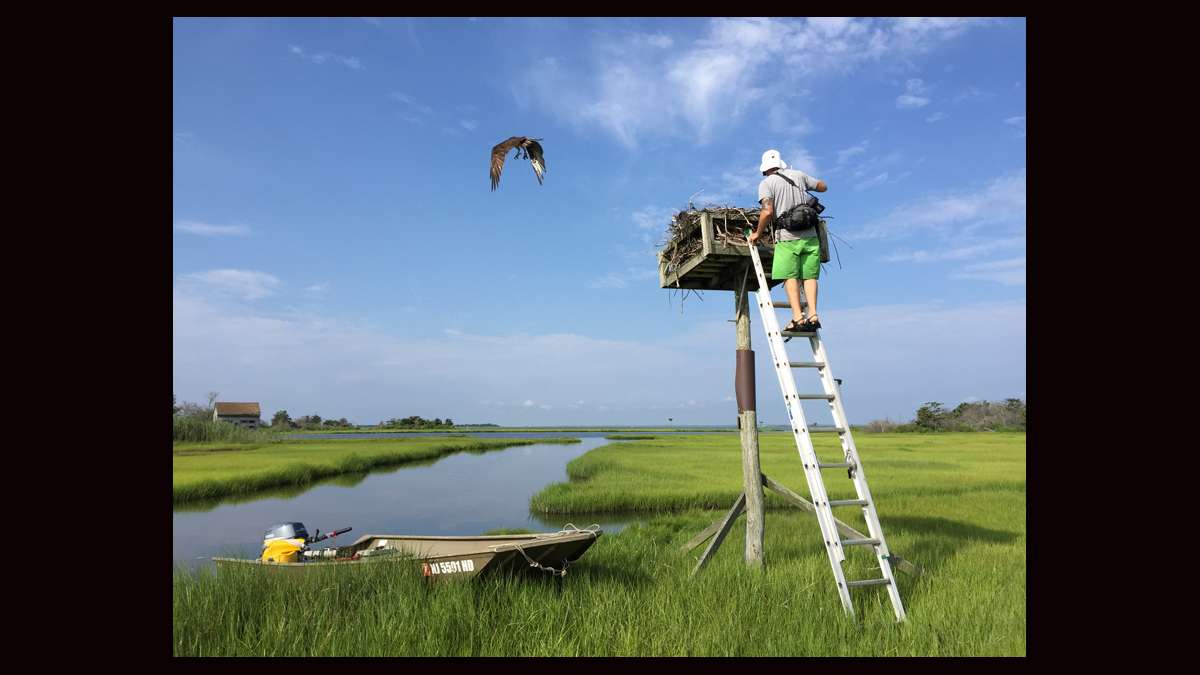
Ben Wurst ready to access an osprey nest. (Justin Auciello for WHYY)
-
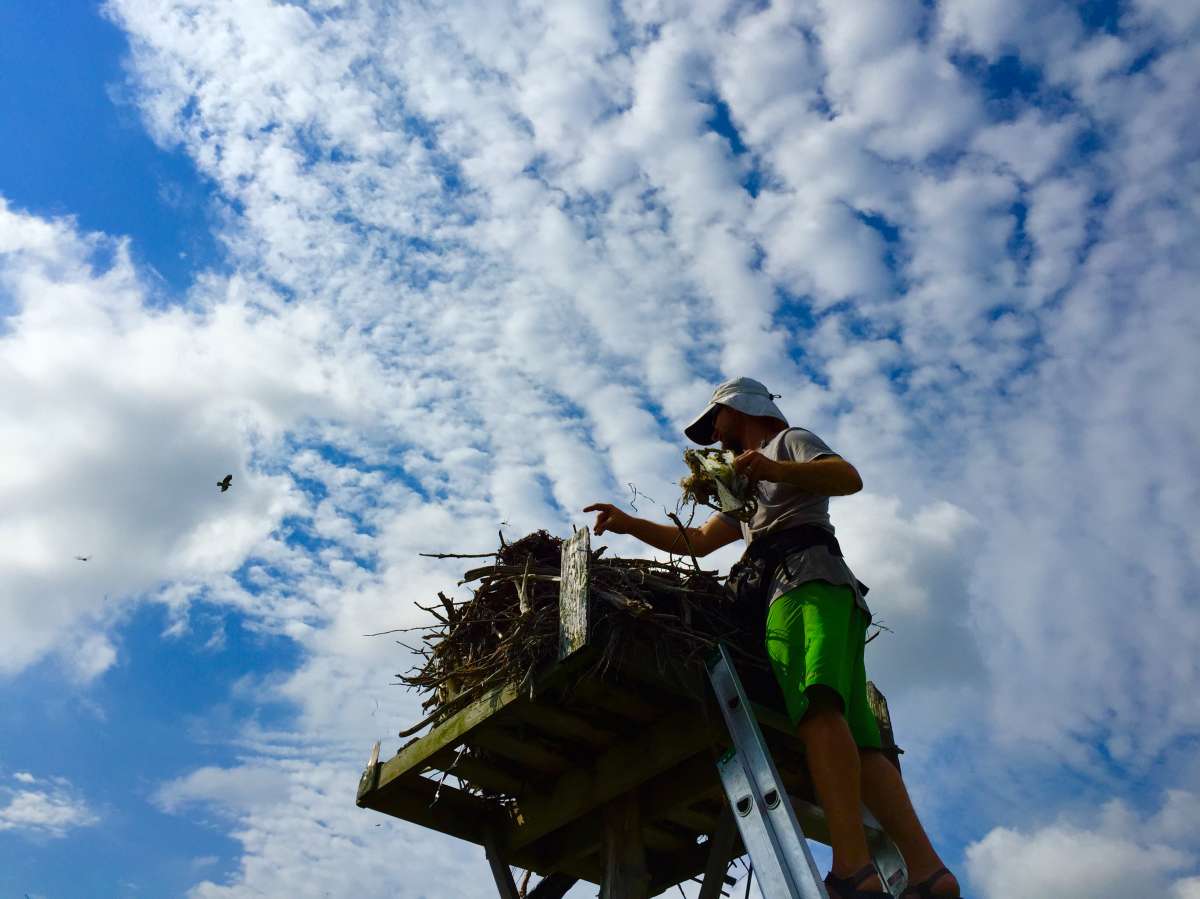
Ben Wurst removing trash from an osprey nest. (Justin Auciello for WHYY)
-
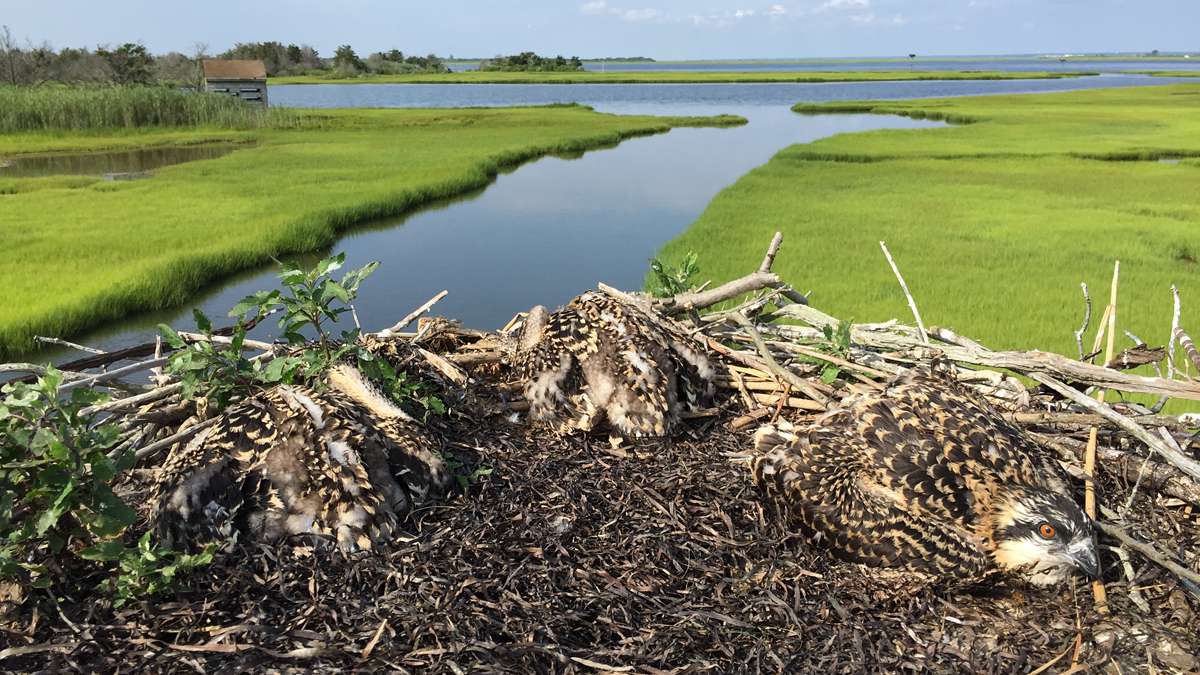
(Justin Auciello for WHYY)
-
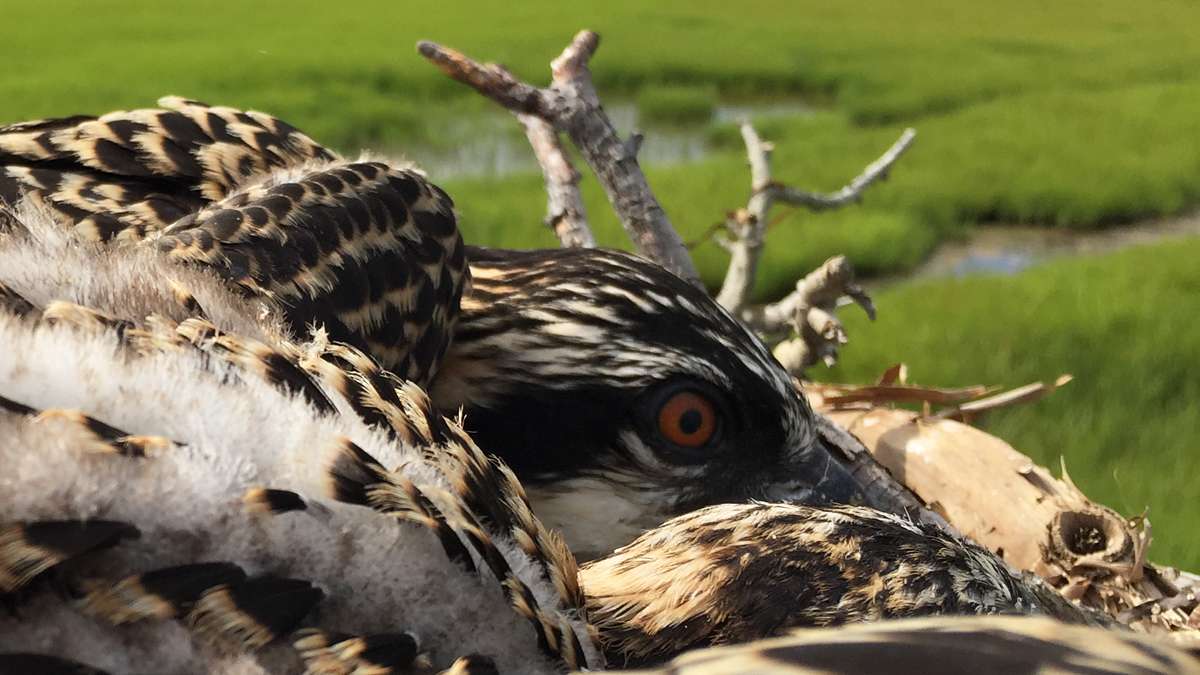
Two osprey chicks huddled together. (Justin Auciello for WHYY)
-
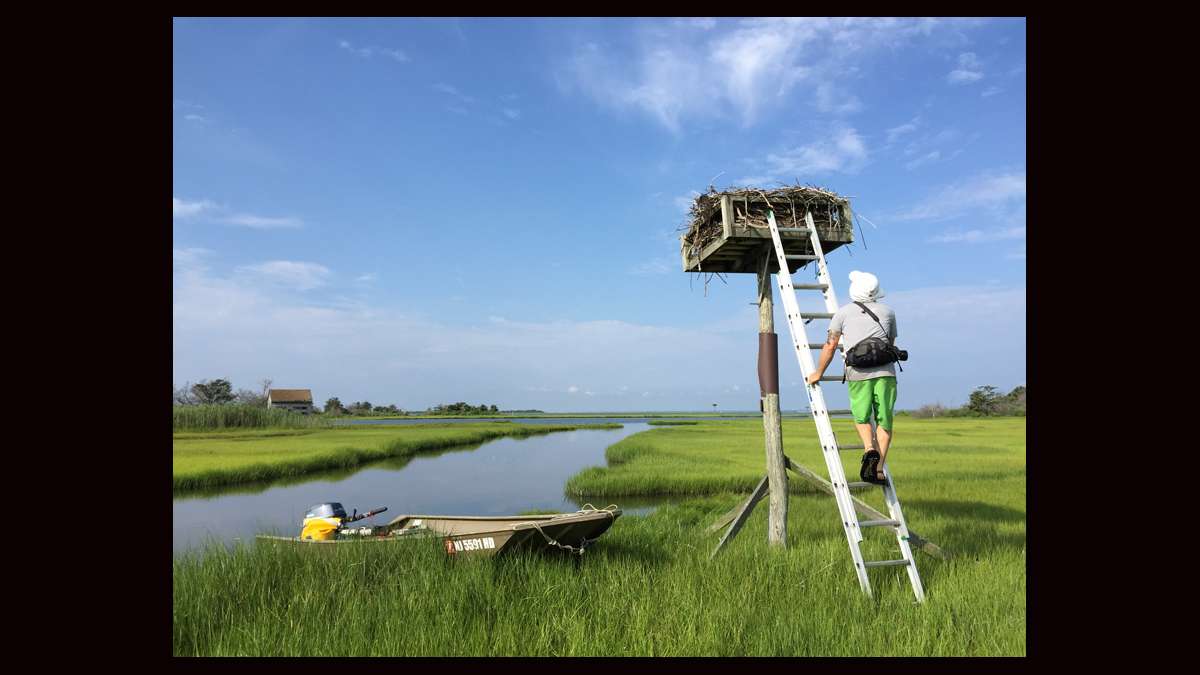
Ben Wurst tagging a chick while the mother osprey passes very close to the nest. (Justin Auciello for WHYY)
-
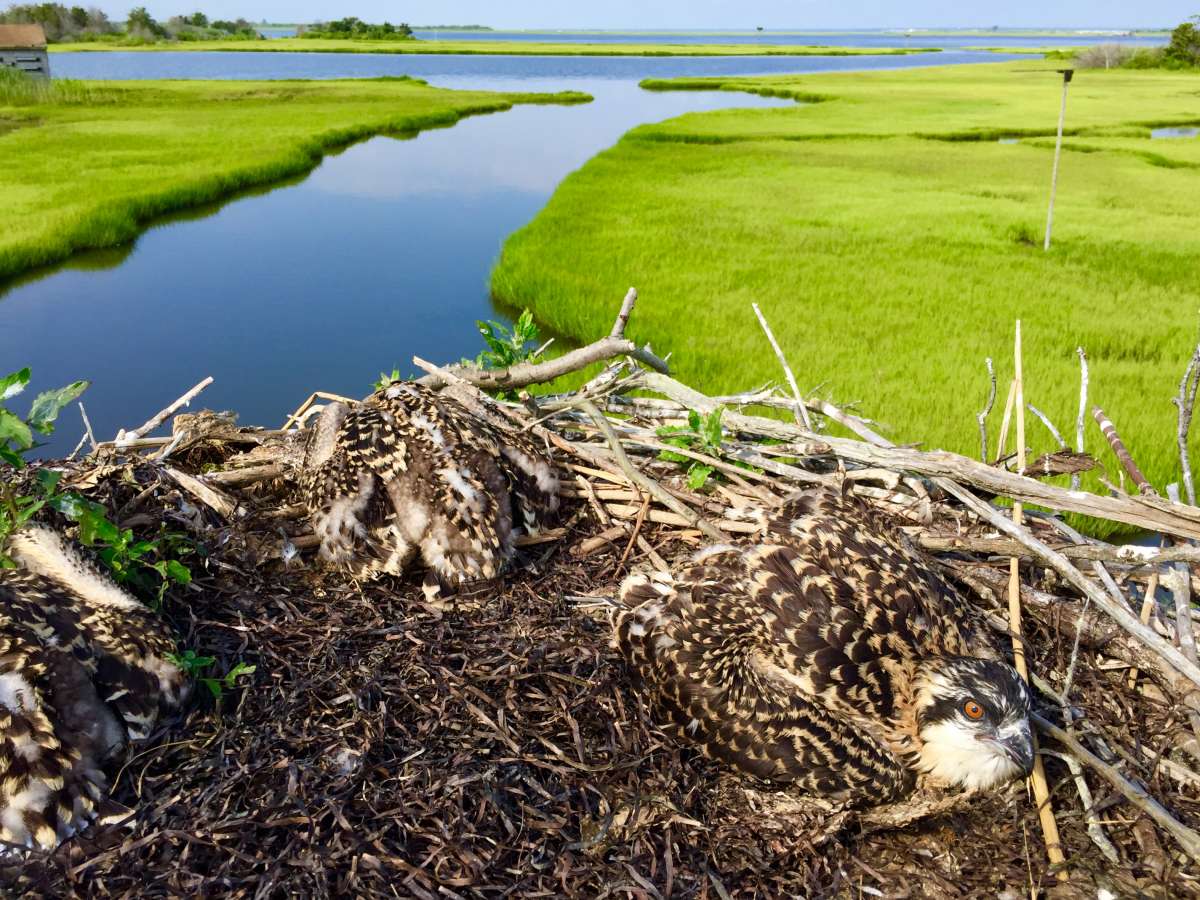
Osprey chicks huddling in the nest. (Justin Auciello for WHYY)
-
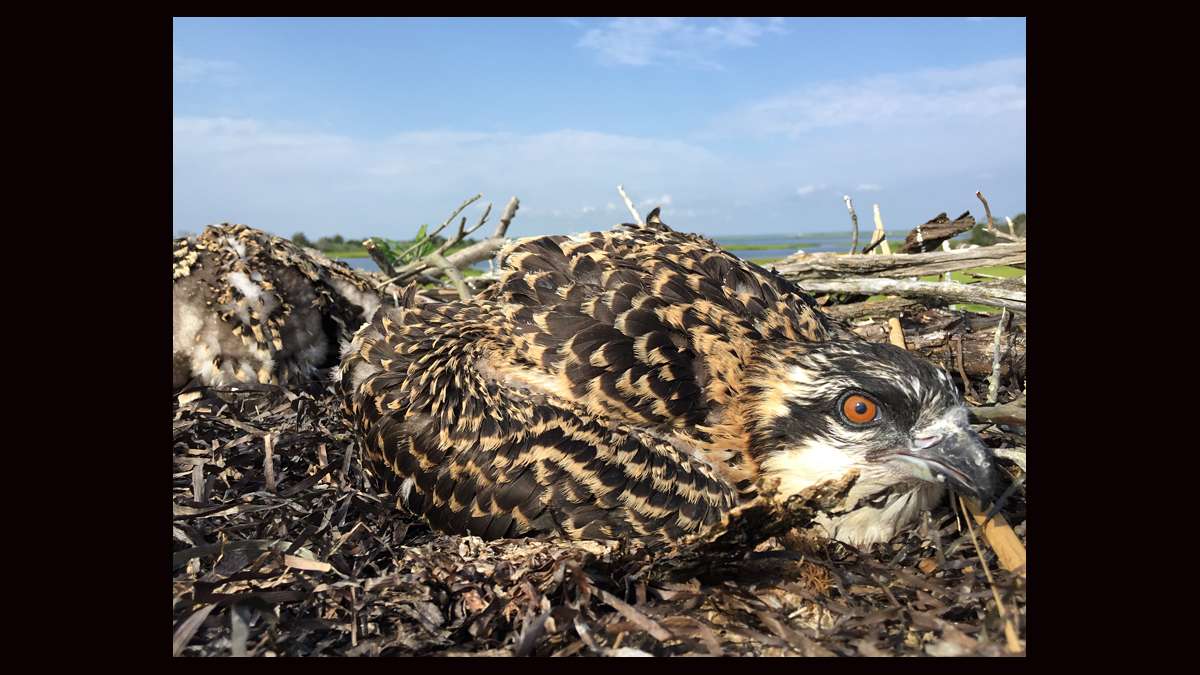
Osprey chicks huddling in the nest. (Justin Auciello for WHYY)
-
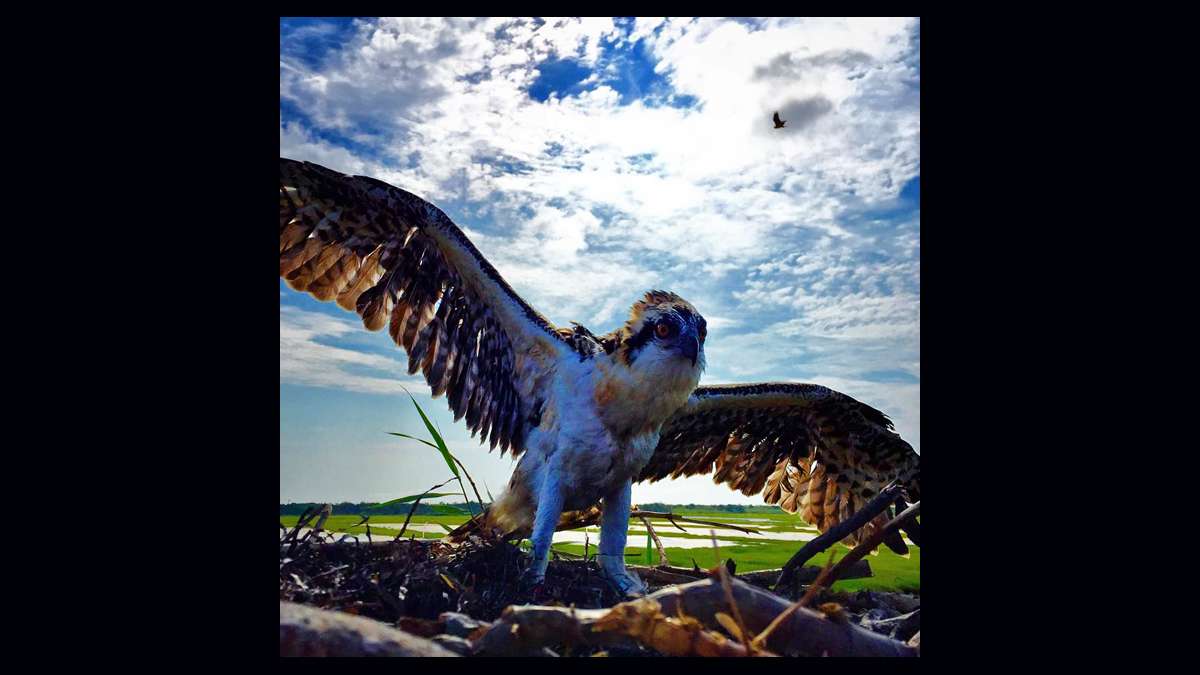
A newly banded nestling and its mother keeping watch above at the Sedge Island Wildlife Management Area in Barnegat Bay. (Justin Auciello for WHYY)
-
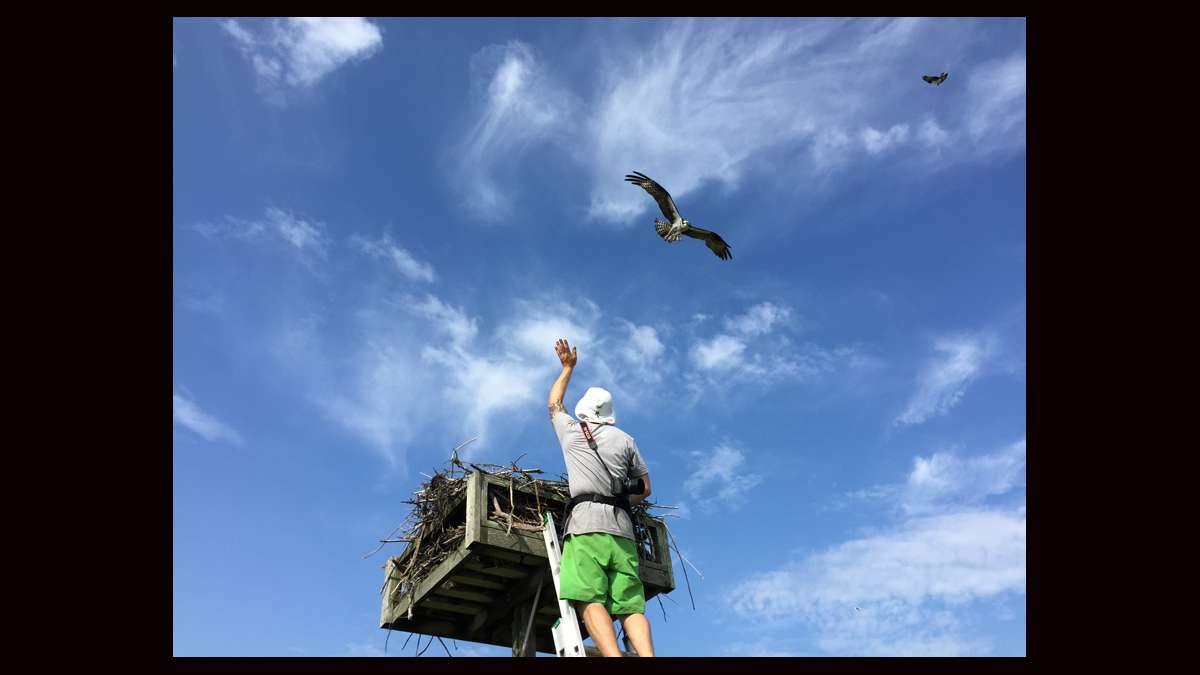
Ben Wurst raises his hand as an osprey approaches the nest. (Justin Auciello for WHYY)
-

Another close approach by an osprey while Ben Wurst works in a nest. (Justin Auciello for WHYY)
-
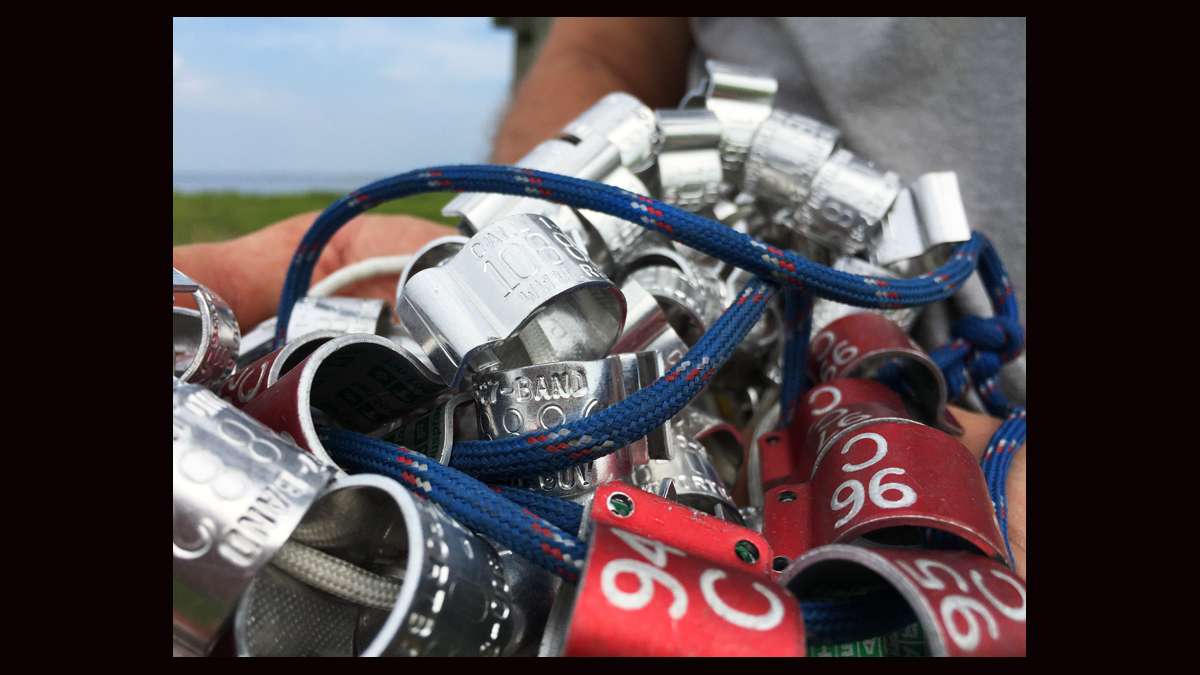
Bands used to identify ospreys. (Justin Auciello for WHYY)
-
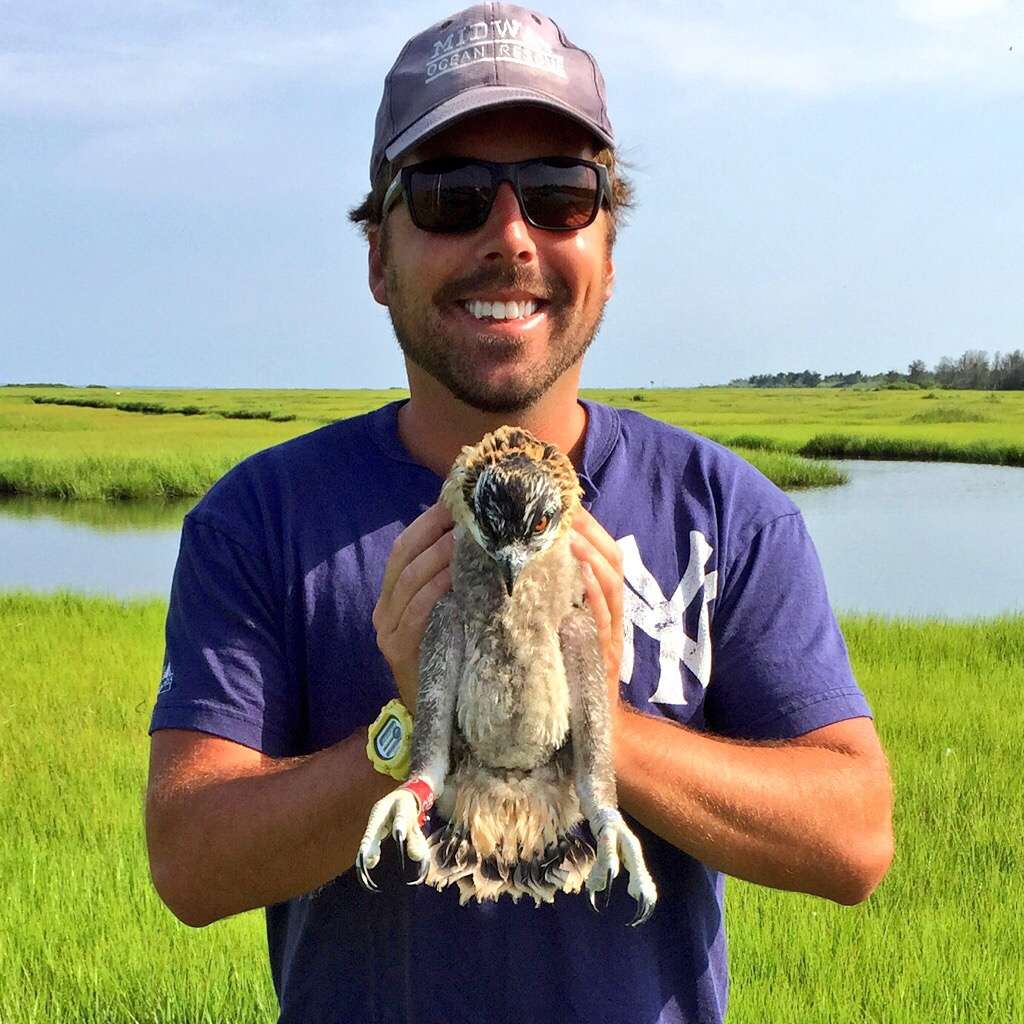
Author Justin Auciello holds an osprey chick. (Photo: Ben Wurst/CWF)
Amid the blue and green hues of the Barnegat Bay’s Sedge Islands State Wildlife Management Area, wooden platforms rise up through the marshland.
As your boat moves through the area, the senses go into overdrive.
Your eyes immediately turn to the male ospreys with their five foot wing spans as they quickly swoop around above the bay waters until they spot their prey and dive into the water, snatching a fish with their sharp talons.
But it’s the smell and the sound that fully immerse you into the world of the osprey.
The salty and pungent scent of the marshland dominates. And, of course, the calls and cries of birds, especially ospreys, fill the air.
During a recent morning survey of the nests on a small motorboat through Sedge Islands, situated west of the southern portion of Island Beach State Park, Conserve Wildlife Foundation of New Jersey’s Habitat Program Manager Ben Wurst described the area’s osprey population.
“It’s pretty much the most densely populated colony for ospreys in New Jersey, where we have been 25 and 30 nesting pairs — all within at least a square mile,” he said while slowly navigating the boat through shallow water.
When approaching four osprey nests — all just feet from the bay’s open waters and two discovered to be inactive — Wurst hopped out of the boat and pulled it ashore.
Grabbing his ladder, walking through the marsh, and positioning it on the nests, his “banding mission,” or affixing red and silver bands on nestling legs, began.
Wurst had to work fast, gently fastening the bands on the nestlings while also protecting himself from the circling mother, who would vocalize a signal to the white, brown, and gray chicks with orange eyes to lay down and play dead while simultaneously dive-bombing him with her sharp talons open.
Despite the obvious risks, he says he has only been actually struck once.
Regardless, it’s a mission that Wurst, a protégé of Pete McClain, the man who brought back New Jersey’s osprey population from near extinction in the early 1970s, accepts unequivocally.
Wurst, who has been conducting osprey surveys for years, determined last year that the state’s osprey population hit an all-time high in 2014.
Now, in connection with the New Jersey Osprey Project, the Conserve Wildlife Foundation of New Jersey is undertaking “Project RedBand,” a citizen-science based project on Barnegat Bay to engage locals and visitors to the Jersey Shore in osprey management and conservation.
Wurst began marking young ospreys at their nest sites with auxiliary color bands on their right leg during this season’s surveys. Over 60 have been affixed on the birds before they were mature enough to fly.
“The use of the auxiliary ‘red bands’ will help us learn a lot about the ecology of ospreys nesting on Barnegat Bay,” he said. “Project RedBand will also help us engage local communities in osprey conservation and management by encouraging citizens to report re-sightings of banded birds.”
[Click here to watch Wurst band osprey chicks]
According to the expert, the red bands will help citizens see the birds as they learn to hunt, soar, and eventually migrate south for the winter. They will eventually reach their destinations in Caribbean, Central America, and Northern South America, where they will remain for the next two years.
“We are hopeful that this project will instill in New Jersey residents a long lasting appreciation for birds of prey and the habitat they require to survive,” he said.
To learn more about Project RedBand and to report sightings, click here. If you’re on a mobile device, scroll down to the bottom to view the gallery.
WHYY is your source for fact-based, in-depth journalism and information. As a nonprofit organization, we rely on financial support from readers like you. Please give today.

